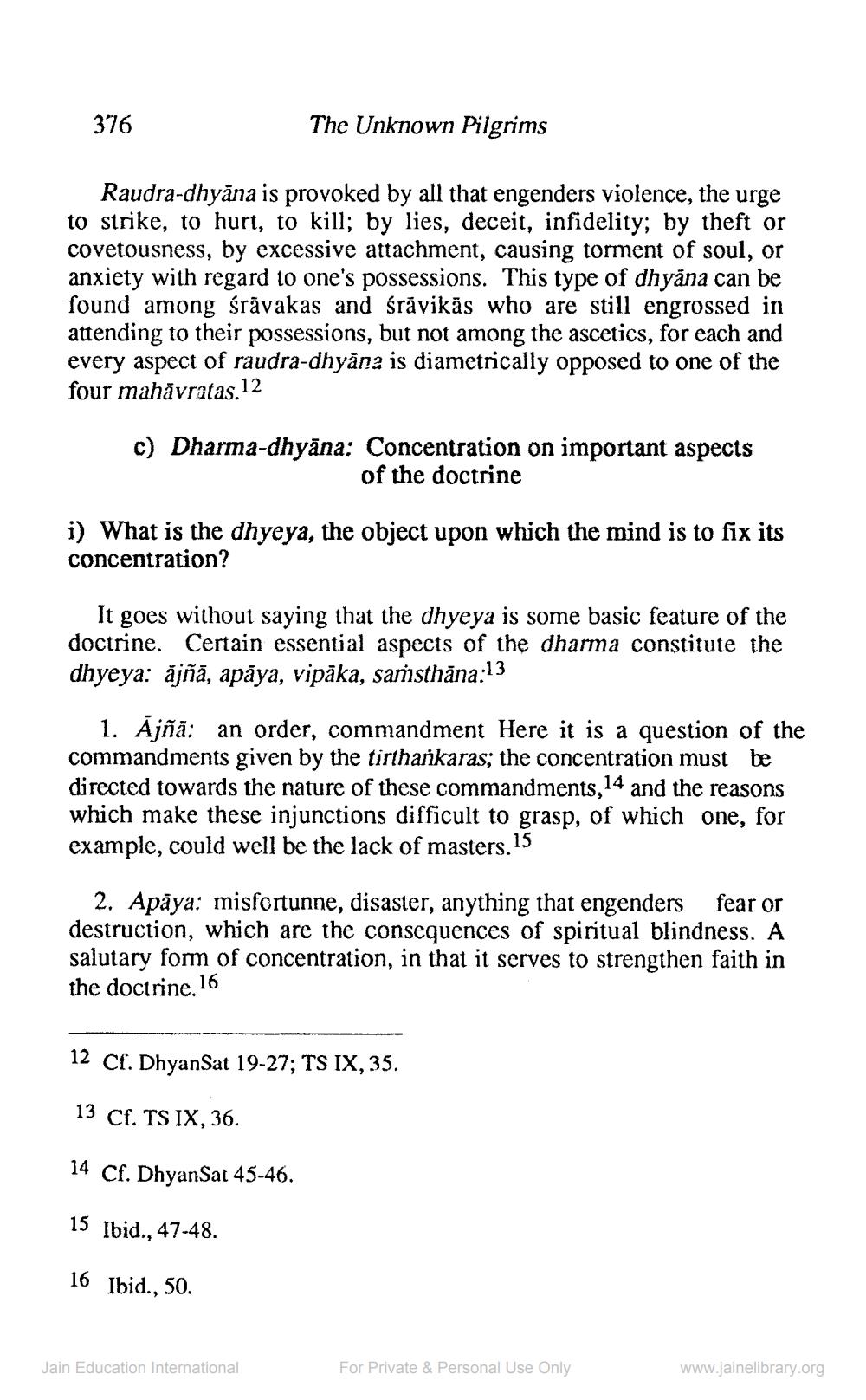________________
376
The Unknown Pilgrims
Raudra-dhyāna is provoked by all that engenders violence, the urge to strike, to hurt, to kill; by lies, deceit, infidelity; by theft or covetousness, by excessive attachment, causing torment of soul, or anxiety with regard to one's possessions. This type of dhyana can be found among śrāvakas and śrāvikās who are still engrossed in attending to their possessions, but not among the ascetics, for each and every aspect of raudra-dhyāna is diametrically opposed to one of the four mahāvratas.12
c) Dharma-dhyāna: Concentration on important aspects of the doctrine
i) What is the dhyeya, the object upon which the mind is to fix its concentration?
It goes without saying that the dhyeya is some basic feature of the doctrine. Certain essential aspects of the dharma constitute the dhyeya: ǎjñā, apāya, vipāka, samsthāna:13
1. Ājñā: an order, commandment Here it is a question of the commandments given by the tirthankaras; the concentration must be directed towards the nature of these commandments, 14 and the reasons which make these injunctions difficult to grasp, of which one, for example, could well be the lack of masters.
15
2. Apaya: misfortunne, disaster, anything that engenders fear or destruction, which are the consequences of spiritual blindness. A salutary form of concentration, in that it serves to strengthen faith in the doctrine.1 16
12 Cf. DhyanSat 19-27; TS IX, 35.
13 Cf. TS IX, 36.
14 Cf. DhyanSat 45-46.
15 Ibid., 47-48.
16 Ibid., 50.
Jain Education International
For Private & Personal Use Only
www.jainelibrary.org




